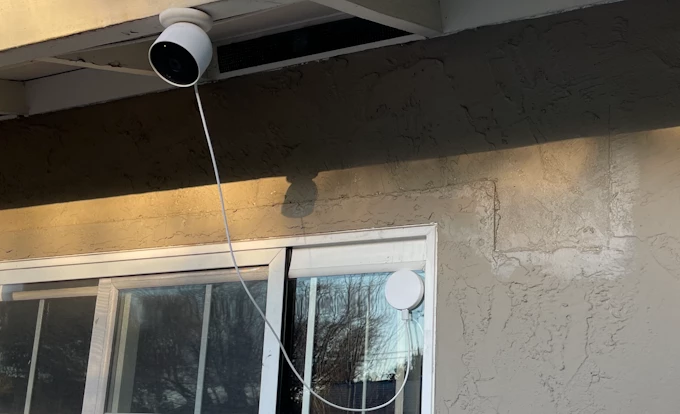The Power Mole wirelessly transmits 10 watts of electricity through window glass, allowing indoor outlets to power outdoor devices. It's built on the inductive coupling technology utilized in wireless smartphone charging systems.
Currently the subject of a Kickstarter campaign, the Power Mole was created by California-based inventor Peter Bevelacqua. It's made for situations in which devices such as security cameras or decorative lights need a power source, but there are no outdoor outlets nearby.
The setup consists of two puck-shaped components: the transmitter, which is adhered to the inside surface of a window pane, and the receiver, which is adhered to the outside of the pane. The transmitter is plugged into an indoor household outlet, while the receiver is USB hard-wired to the outdoor device.

So, how does it work?
Well, as an alternating electric current passes through an induction coil in the transmitter, a fluctuating magnetic field is generated. That field passes through up to 30 mm of glass, producing an alternating electric current in the receiver's induction coil. An integrated rectifier converts that AC current to DC (direct current), which powers the plugged-in gadget.
It's important to note that in its present form, the Power Mole is limited to use with devices that utilize a USB or 5-volt input … so no, you can't use it to power your electric drill.
It's also not as energy-efficient as plugging directly into a wall outlet. Bevelacqua tells us that for powering a device like a camera – which consumes about 5 watts – the Power Mole's efficiency ranges from around 50% (at the maximum spacing of 30 mm) up to 75% (at a spacing of less than 6 mm).
That said, if the transmitter is plugged in but can't connect to the receiver, it automatically shuts off in order to save electricity. The system also isn't limited to use with glass, as it can additionally transmit through wood or just about any other non-metallic material. If metal is detected between the transmitter and receiver, the transmitter shuts itself off.

Assuming the Power Mole reaches production, a pledge of US$59 will get you a package consisting of a transmitter (with power cord), receiver, and 3M adhesive pads for both units. The Kickstarter is limited to US customers, although international availability should follow if the campaign is a success.
There's more information in the following video.
Source: Kickstarter





